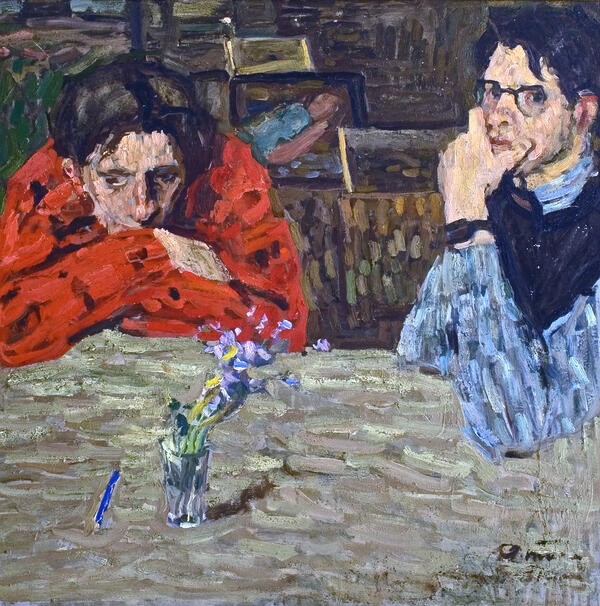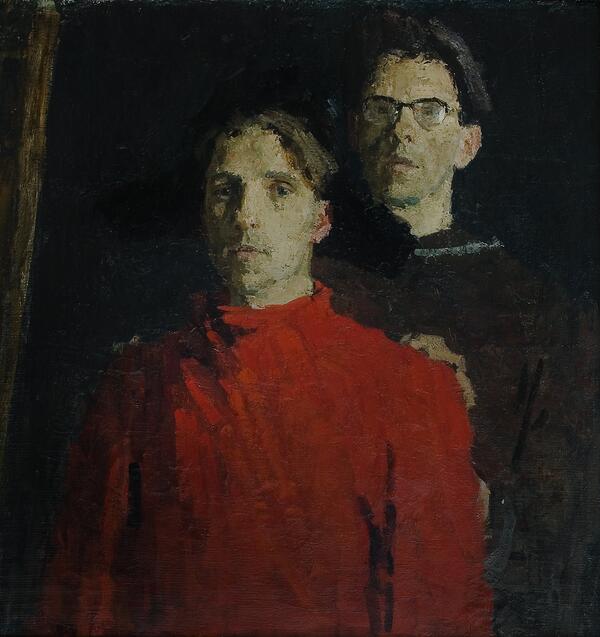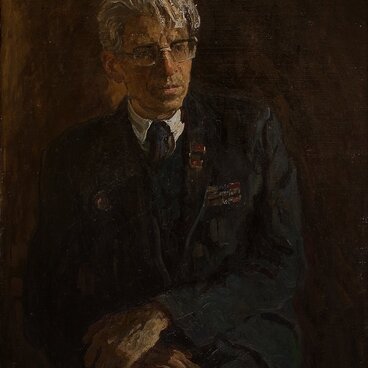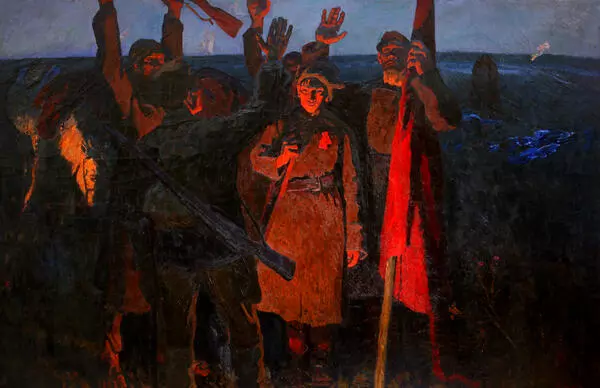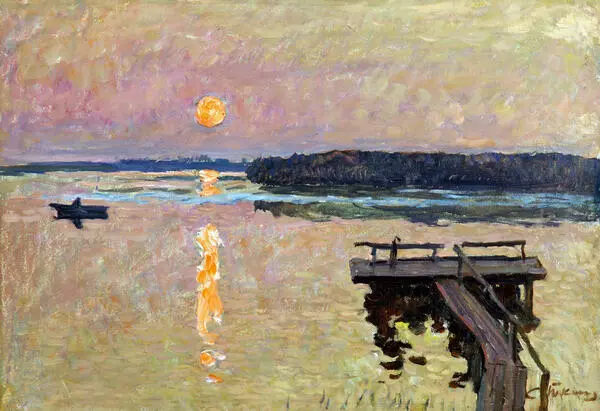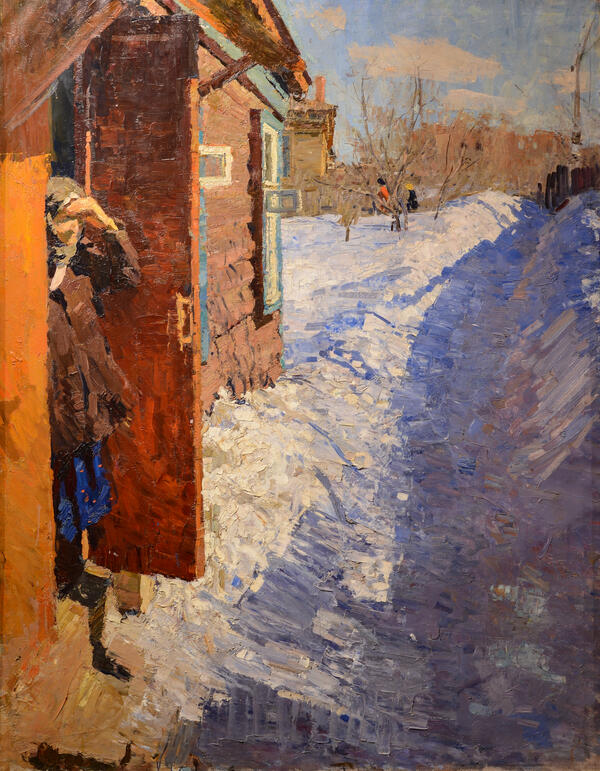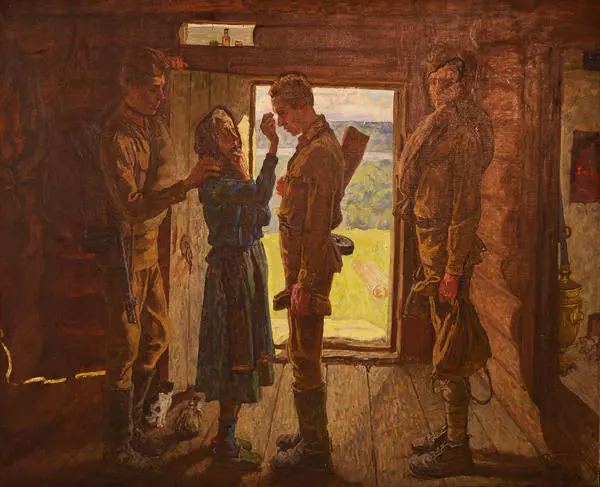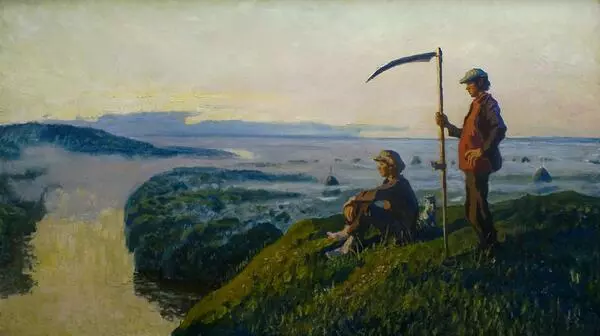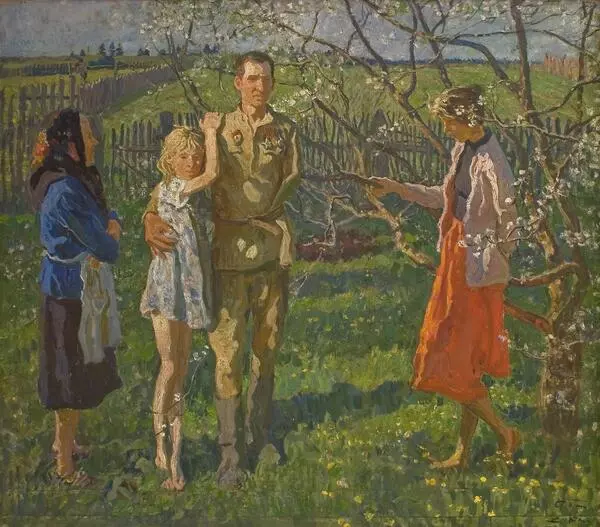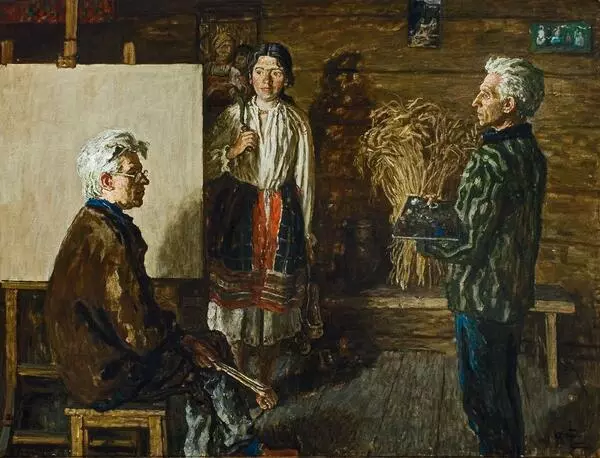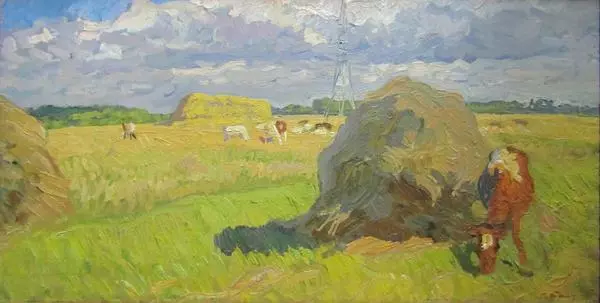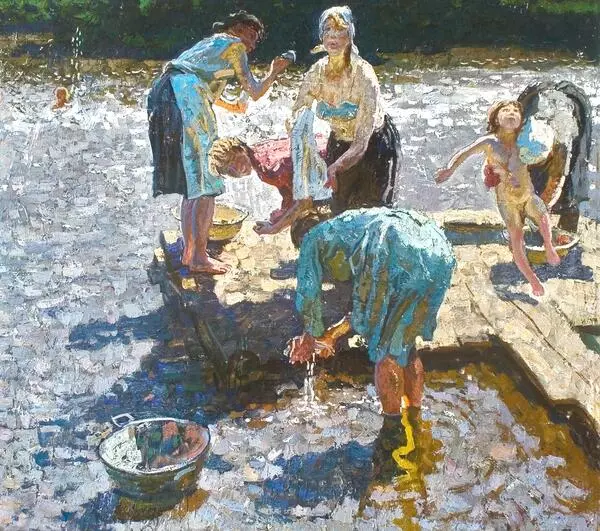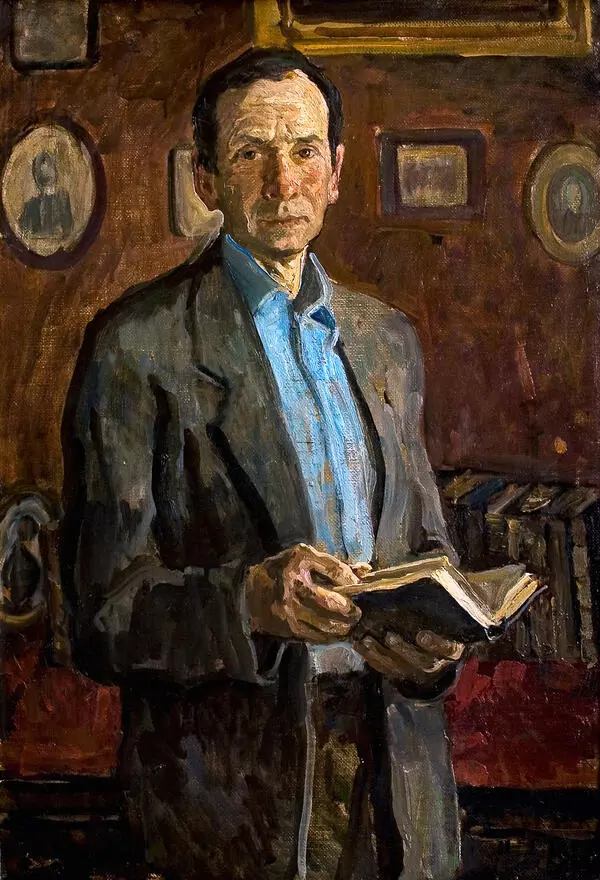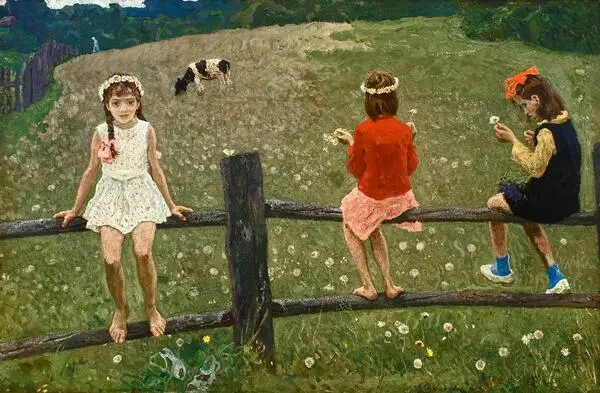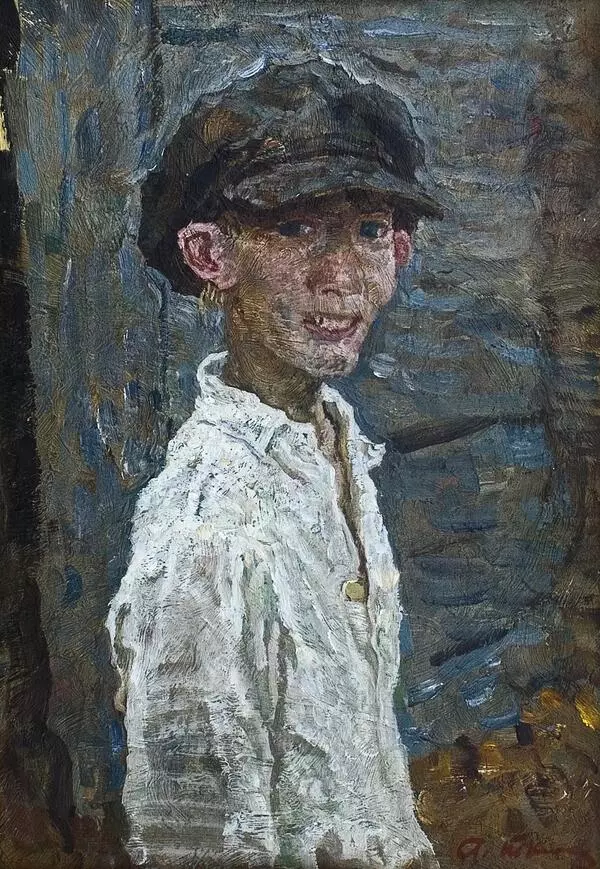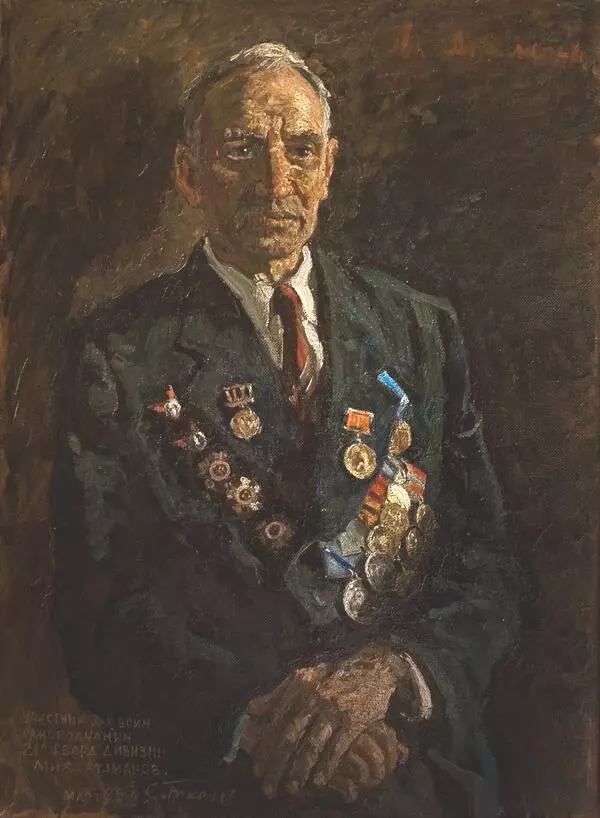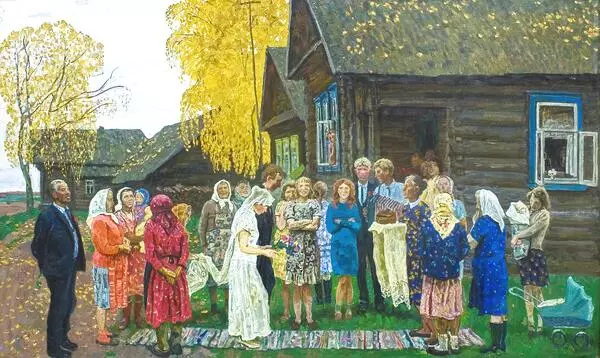Alexei and Sergei Tkachyov completed ‘Self Portrait’ in 1960. They depict themselves at the ‘Akademicheskaya Dacha’. Sergei Tkachyov, the older brother, is on the right. He is looking thoughtfully into the distance, his arm propping up his chin. Alexei Tkachyov sits on the left. He is deep in thought, with his head resting on his crossed arms. The outlines of frames and paintings are visible behind the brothers. The viewer gets the sense that the artists are considering their future creative direction.
By 1960, the brothers had started to paint together. This creative method is very rarely seen in art history. Researchers note, that the collaborative work of the artists is especially interesting because each of them developed their own style over the years of working together. Sergei Tkachyov is a master of composition.
By 1960, the brothers had started to paint together. This creative method is very rarely seen in art history. Researchers note, that the collaborative work of the artists is especially interesting because each of them developed their own style over the years of working together. Sergei Tkachyov is a master of composition.
He prefers to develop a detailed subject and loves a restrained color palette. Alexei Tkachyov is more poetic, and is a virtuosic master of color. He creates rich coloristic structures.
At the preliminary stage of developing sketches, the brothers usually work independently. They consider the painting’s theme independently, experimenting with colors. Then they examine all of the studies and together choose the most successful version. The main features of the sketch are then transferred to the canvas. Smaller features are then decided upon by numerous sketches of the subject.
Artists approach the subject very seriously. Art historian Vladimir Lapshin has written that for “Between Battles”, the artists “took a long time to select the clothes, shoes, patterns (found in the Museum of the Revolution), and made budyonovkas. They hunted out a book in the museum with red binding for a young fighter…” - and this was only a small proportion of the work. They worked on a few dozen studies in preparation for painting the teacher. This thorough process is clear to see in the artists’ larger works. For example, when working on ‘For the Land. For Freedom’, they would light a fire in the evening outside their studio and paint studies depicting the flickering of the flames.
In the year they worked on their Self Portrait, they showed six of their collaborative works at the first national exhibition. ‘Between Fights’ and ‘Youngsters’ were exhibited. The paintings received glowing praise.
At the preliminary stage of developing sketches, the brothers usually work independently. They consider the painting’s theme independently, experimenting with colors. Then they examine all of the studies and together choose the most successful version. The main features of the sketch are then transferred to the canvas. Smaller features are then decided upon by numerous sketches of the subject.
Artists approach the subject very seriously. Art historian Vladimir Lapshin has written that for “Between Battles”, the artists “took a long time to select the clothes, shoes, patterns (found in the Museum of the Revolution), and made budyonovkas. They hunted out a book in the museum with red binding for a young fighter…” - and this was only a small proportion of the work. They worked on a few dozen studies in preparation for painting the teacher. This thorough process is clear to see in the artists’ larger works. For example, when working on ‘For the Land. For Freedom’, they would light a fire in the evening outside their studio and paint studies depicting the flickering of the flames.
In the year they worked on their Self Portrait, they showed six of their collaborative works at the first national exhibition. ‘Between Fights’ and ‘Youngsters’ were exhibited. The paintings received glowing praise.
They were acquired for the collections of The State Tretyakov Gallery and the Russian Museum. In 1963, the brothers were awarded the title ‘Honored Artist of the RSFSR’.

